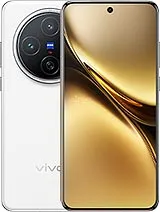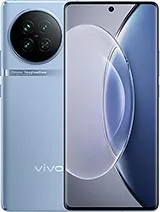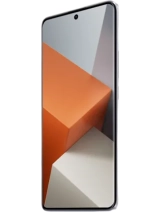Sign in to Your Account
Xiaomi Redmi K30 Pro
Xiaomi Redmi K30 Pro Overview
Xiaomi Redmi K30 Pro Price in Nepal, Deals & Specifications
The phone was launched on 2020, March 24, with a price of around About 390 EUR in Nepal. It runs on Android 10, featuring a 6.67 inches touchscreen display, and has 128GB 6GB RAM, 128GB 8GB RAM, 128GB 12GB RAM, 256GB 8GB RAM. Phone is powered by a Li-Po 4700 mAh battery, the device ensures ...
Display and Design
The phone sports a 6.67 inches, 107.4 cm2 (~87.2% screen-to-body ratio) touchscreen display with a resolution of 1080 x 2400 pixels, 20:9 ratio (~395 ppi density). With a Super AMOLED, HDR10+, 500 nits (typ) screen, this device offers a smooth visual experience, available in color variants like Neon Blue, Phantom White, Electric Purple, Cyber Gray.
Performance, Storage, and Battery
The phone runs Android 10, MIUI 11 and powered by a Qualcomm SM8250 Snapdragon 865 5G (7 nm+), Octa-core (1x2.84 GHz Cortex-A77 & 3x2.42 GHz Cortex-A77 & 4x1.80 GHz Cortex-A55). Equipped with 128GB 6GB RAM, 128GB 8GB RAM, 128GB 12GB RAM, 256GB 8GB RAM and internal storage, the phone weighs 218 g (7.69 oz) and measures 163.3 x 75.4 x 8.9 mm (6.43 x 2.97 x 0.35 in). It also houses a robust Li-Po 4700 mAh battery for extensive usage.
Camera
The rear camera setup includes a 64 MP, f/1.9, 26mm (wide), 1/1.72", 0.8µm, PDAF 5 MP, f/2.2, 50mm (telephoto macro), AF 13 MP, f/2.4, 123˚ (ultrawide), 1.12µm 2 MP, f/2.4, (depth) and It supports 8K@24/30fps, 4K@30/60fps, 1080p@30/60/120/240fps, 1080p@960fps; gyro-EIS video recording. For selfies, the device includes a Motorized pop-up 20 MP, (wide), 1/3.4", 0.8µm front camera, also supporting 1080p@30fps, 720p@120fps video recording.
Xiaomi Redmi K30 Pro Connectivity and Sensors
The Xiaomi Redmi K30 Pro offers connectivity options like Wi-Fi, GPS, Bluetooth 5.1, A2DP, LE, aptX HD, aptX Adaptive, USB with USB Type-C 2.0, OTG, and HSPA, LTE, 5G. It supports Dual SIM (Nano-SIM, dual stand-by) and includes sensors like Fingerprint (under display, optical), accelerometer, gyro, compass, barometer.
More from Xiaomi
Xiaomi Redmi K30 Pro Full Specifications
| Announced | 2020, March 24 |
| Status | Available. Released 2020, March 27 |
| Colors | Neon Blue, Phantom White, Electric Purple, Cyber Gray |
| Price | About 390 EUR |
| Technology | GSM / CDMA / HSPA / EVDO / LTE / 5G |
| 2G | GSM 850 / 900 / 1800 / 1900 - SIM 1 & SIM 2 |
| 3G | HSDPA 850 / 900 / 1900 / 2100 - China |
| 4G | 1, 3, 5, 7, 8, 34, 38, 39, 40, 41 - China |
| 5G | 1, 3, 41, 78, 79 SA/NSA |
| Speed | HSPA, LTE, 5G |
| Dimensions | 163.3 x 75.4 x 8.9 mm (6.43 x 2.97 x 0.35 in) |
| Weight | 218 g (7.69 oz) |
| Build | Glass front (Gorilla Glass 5), glass back (Gorilla Glass 5), aluminum frame |
| SIM | Dual SIM (Nano-SIM, dual stand-by) |
| Type | Super AMOLED, HDR10+, 500 nits (typ) |
| Size | 6.67 inches, 107.4 cm2 (~87.2% screen-to-body ratio) |
| Resolution | 1080 x 2400 pixels, 20:9 ratio (~395 ppi density) |
| Protection | Corning Gorilla Glass 5 |
| OS | Android 10, MIUI 11 |
| Chipset | Qualcomm SM8250 Snapdragon 865 5G (7 nm+) |
| CPU | Octa-core (1x2.84 GHz Cortex-A77 & 3x2.42 GHz Cortex-A77 & 4x1.80 GHz Cortex-A55) |
| GPU | Adreno 650 |
| Card Slot | No |
| Variants | 128GB 6GB RAM, 128GB 8GB RAM, 128GB 12GB RAM, 256GB 8GB RAM |
| Primary | 64 MP, f/1.9, 26mm (wide), 1/1.72", 0.8µm, PDAF 5 MP, f/2.2, 50mm (telephoto macro), AF 13 MP, f/2.4, 123˚ (ultrawide), 1.12µm 2 MP, f/2.4, (depth) |
| Features | HDR |
| Primary Video | 8K@24/30fps, 4K@30/60fps, 1080p@30/60/120/240fps, 1080p@960fps; gyro-EIS |
| Secondary | Motorized pop-up 20 MP, (wide), 1/3.4", 0.8µm |
| Secondary Video | 1080p@30fps, 720p@120fps |
| Loudspeaker | Yes |
| 3.5mm Jack | Yes |
| WIFI | Wi-Fi 802.11 a/b/g/n/ac/6, dual-band, Wi-Fi Direct |
| Bluetooth | 5.1, A2DP, LE, aptX HD, aptX Adaptive |
| Navigation | GPS (L1+L5), GLONASS (G1), BDS (B1I+B2a), GALILEO (E1+E5a), QZSS (L1+L5) |
| NFC | Yes |
| USB | USB Type-C 2.0, OTG |
| Infrared port | Yes |
| Radio | No |
| Sensors | Fingerprint (under display, optical), accelerometer, gyro, compass, barometer |
| Type | Li-Po 4700 mAh |
| Charging | 30W wired, PD3.0, QC4, 100% in 63 min (advertised) |
Reviews
There are no reviews yet.






























 Xiaomi Poco Pad M1
Xiaomi Poco Pad M1
 Xiaomi Redmi K90 Pro
Xiaomi Redmi K90 Pro
 Xiaomi Redmi K90
Xiaomi Redmi K90
 Xiaomi Redmi Watch 6
Xiaomi Redmi Watch 6
 Xiaomi Poco X5 Pro
Xiaomi Poco X5 Pro